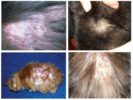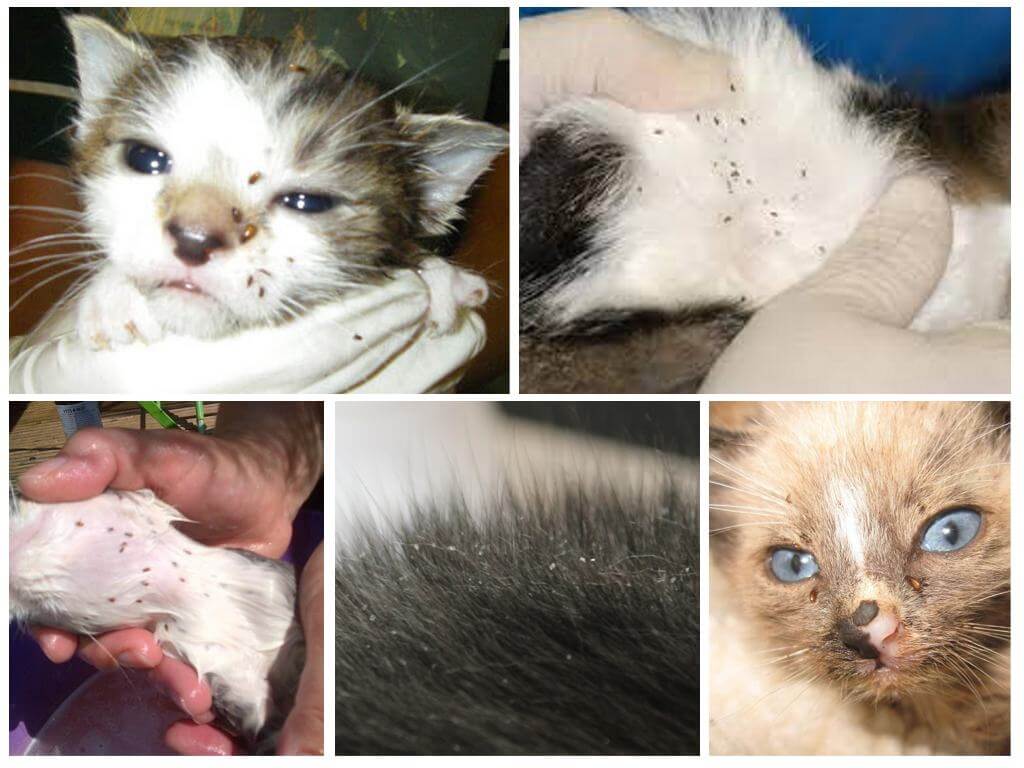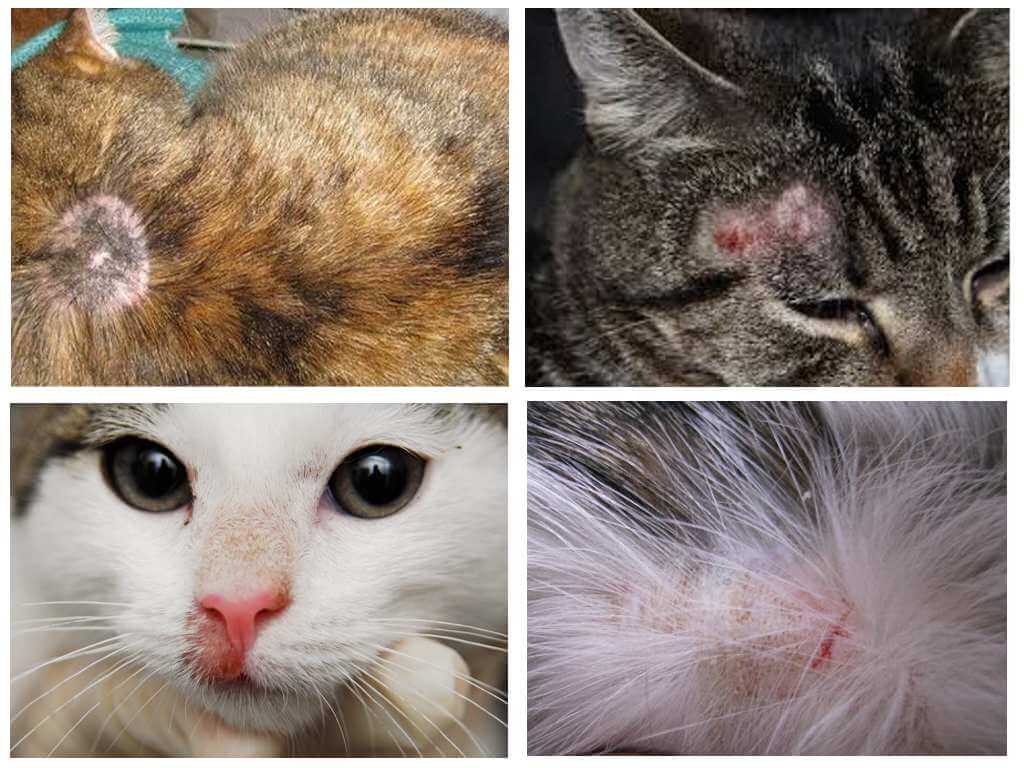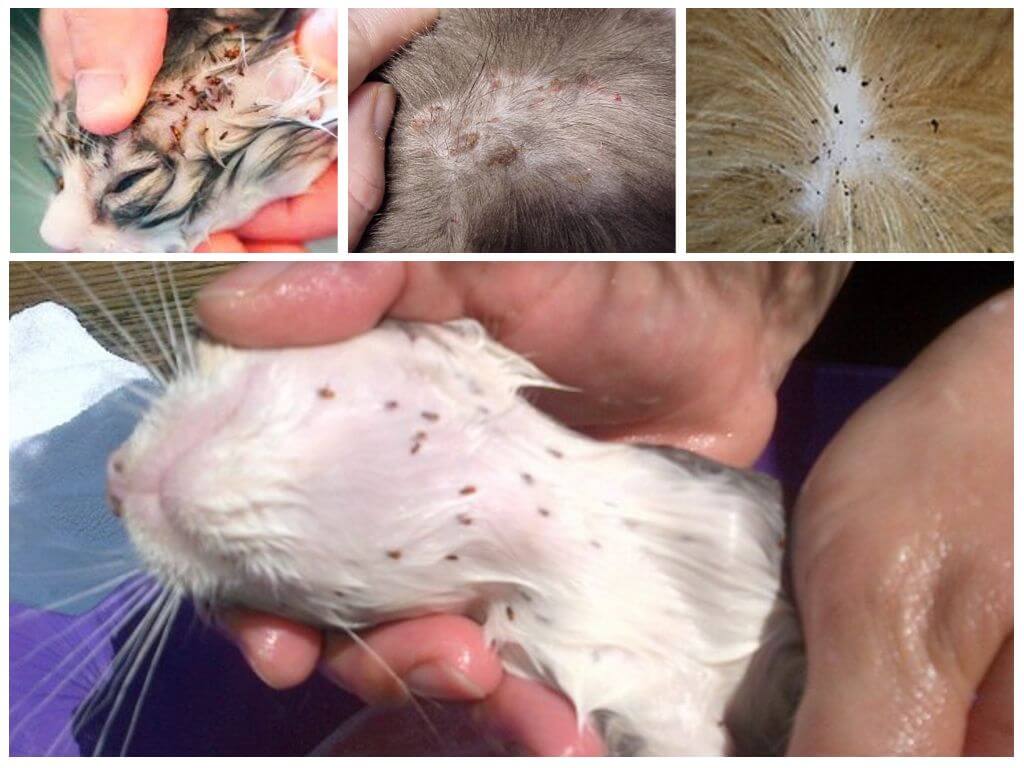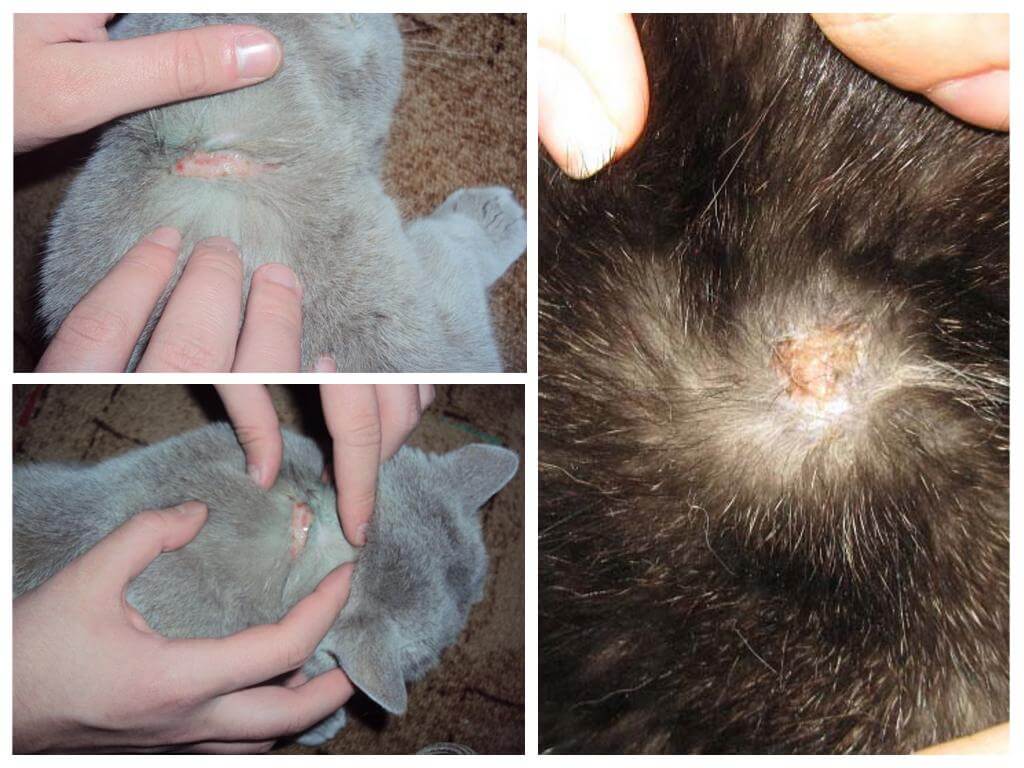- Allergy to flea bites in cats
- Visit to the vet
- Cat flea treatment
Cat fleas - small insects that live in animal hair. A bite of a parasite in a cat can lead not only to skin infections, but also cause an allergic reaction. Flea allergy is perhaps the most common disease in pets. Thus, the pet's immune system reacts to foreign substances (allergens or antigens), trying to get rid of them. Below you can see how the flea allergy in cats actually looks in the photo.
Most often, flea allergies in cats are observed in young animals or even small kittens. The longer this disease occurs, the more severe the reaction of the body. With an increase in insect activity in the warm season, the risk of allergies increases significantly.
Symptoms of the disease
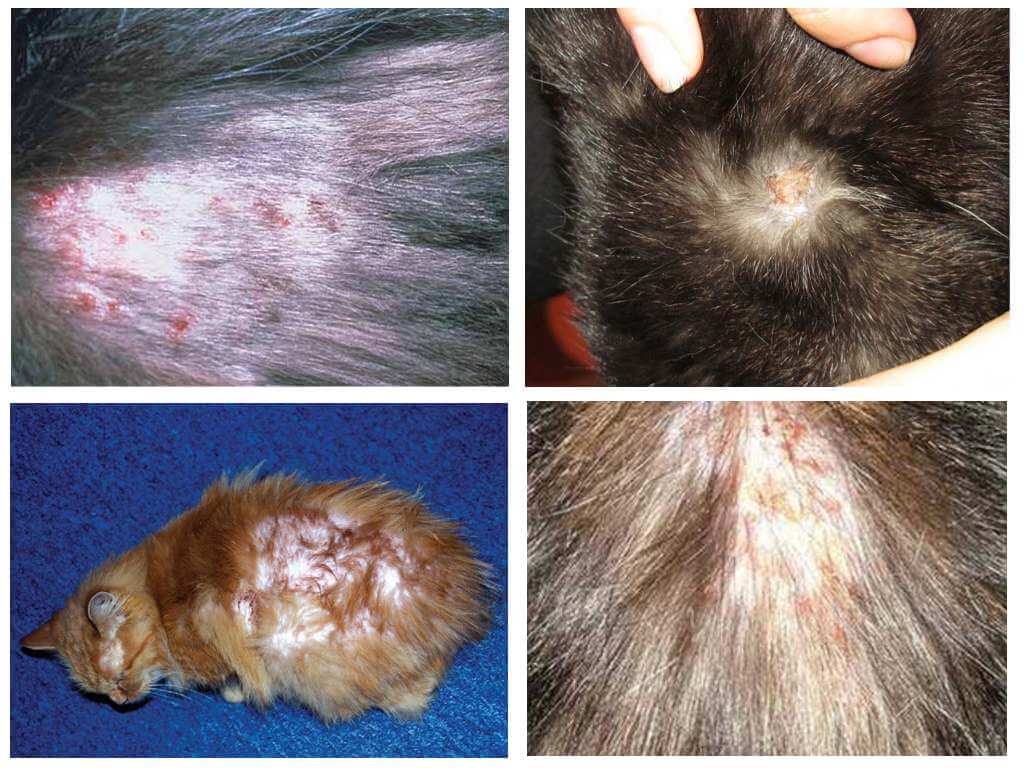
To understand the caring owner that a cat is allergic to fleas (allergic dermatitis) by the following signs:
- severe itching - the pet very often itches, and also tries to bite its coat and skin;
- breathing problems - possible coughing, wheezing when inhaling and exhaling;
- liquid discharge from the nose and eyes;
- hair loss, the consequence of which may even be baldness in some parts of the animal’s body;
- the presence of papules - small red tubercles on the surface of the skin;
- redness of the skin, the presence of scratches and wounds.
Most often, such symptoms can be observed in cats in the groin or in the area located closer to the base of the tail. In more rare cases, parasites are activated on the face and neck of the pet, and almost never fleas attack cat's paws.
The above symptoms may occur for several days. Of particular danger is secondary infection. It occurs due to the fact that the cat is actively combing its skin before the formation of wounds. They are the source of infection by pathogenic fungi and bacteria.
How to treat an allergy in a cat
Each owner, faced with the occurrence of allergies in his pet, is puzzled than treating the animal.
Consultation with a specialist is the first step to be taken to solve this problem. The diagnosis can be made by a doctor, both by visual signs, and by the results of a skin examination or by a special blood test.
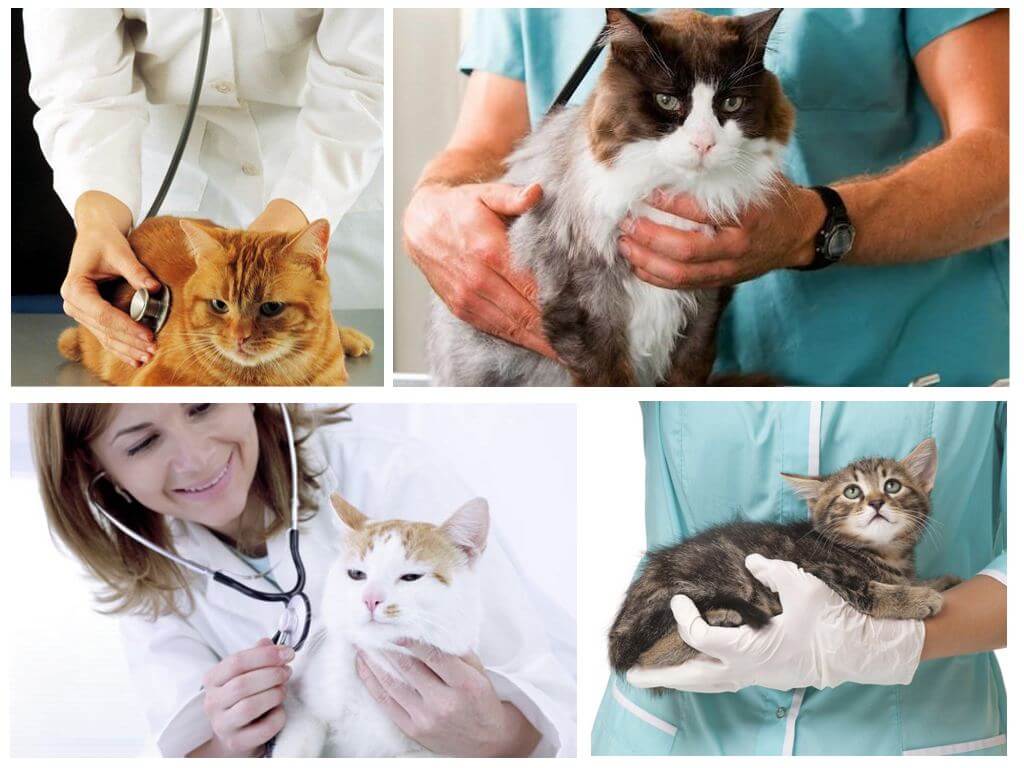
The use of anti-cloud agents
It is necessary to limit the animal from the effects of provoking factors, that is, take measures to killing fleas in a cat. There is a mass antiparasitic drugsHowever, their choice depends on each specific case and individual characteristics of the pet. So, if there are scratches and skin lesions, the products for external use will not work. Some drugs can have a side effect or be addictive, so treatment should be prescribed only by a specialist.
For the purpose of prevention, many owners of mustachioed pets use insecticidal shampoo, which has a mild effect and is effective with a slight degree of cat infection with fleas. Detergents have proven themselves well: Leopard, Lugovoi, "Insectin" and "Fitoelita."
Antiparasitic drugs can be made in the form of injections and pillswhose advantage is animal safety. Sprays have a good effect, collars and drops. In addition to the instant effect, they have a long period of exposure to parasites. Their assortment is quite large, which allows you to make a choice taking into account your own preferences:
- Inspector;
- Adventage;
- Blokhnet;
- Stronghold;
- Dana Ultra Neo;
- Rolf Club 3D;
- Delix;
- Drops at the withers 4 with a tail;
- Front line;
- Barrier;
- Helmintal;
- Celandine.
However, some animals may be allergic to flea drops or when using a spray.
Housing Processing
Not only a cat or a cat needs processing, but also the room itselfin which the pet lives. For this use aggressive insecticides. Also, the accessories of the animal should be subjected to this procedure: its bedding, toys, house. It is very important to ensure that fleas do not reappear, since even one flea bite can provoke a relapse of the disease.
Antiallergic therapy
If the cat is allergic to fleas, it must be treated without fail, since over time the consequences of the disease can only worsen.
- If there are signs of allergy, the animal must be given an antihistamine, the dosage of which is selected by the veterinarian. Such a medicine is suprastin or diphenhydramine.
- Hydrocortisone ointment will help reduce cat itching. However, if there is damage to the skin, its use is contraindicated.
- For healing of wounds resulting from scratching, chloramphenicol ointment is used. The drug prevents the further spread of the inflammatory process. A good healing effect has a cream, which includes aluminum. This is Aluminum or Aluspray.
When processing a cat, it is important to prevent it from licking the medicine from its coat, as this can lead to poisoning. To ease the situation, a special collar-tube will help, which is worn on the cat’s neck and makes it impossible to lick itself. - In particularly difficult cases, a specialist can prescribe hormonal injections that block allergic symptoms and provide immediate relief. Sublingual drops, which include flea antigens, can also be prescribed. They form a healthy immune response to flea bites.
- In the presence of secondary infections, a course of antifungal drugs or antibiotics is necessary.
In order to never have an allergy to flea bites in cats, it is necessary to regularly inspect the pet’s hair and, if necessary, use anti-flea agents. After all, preventing a disease is much easier than treating it.
